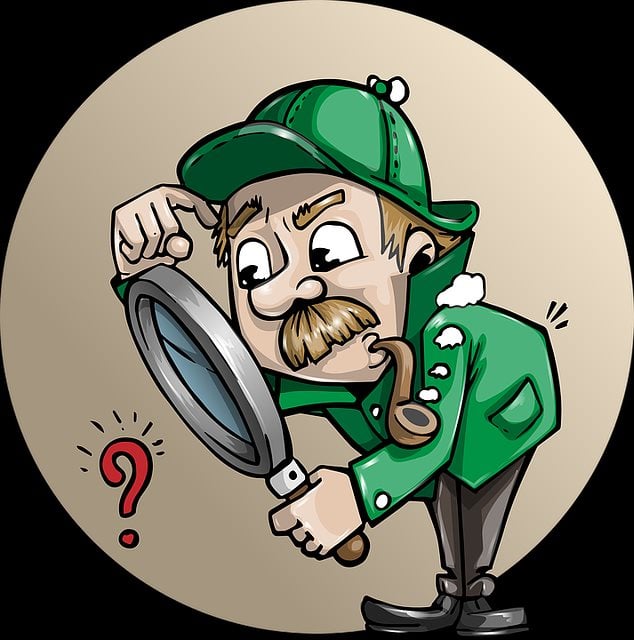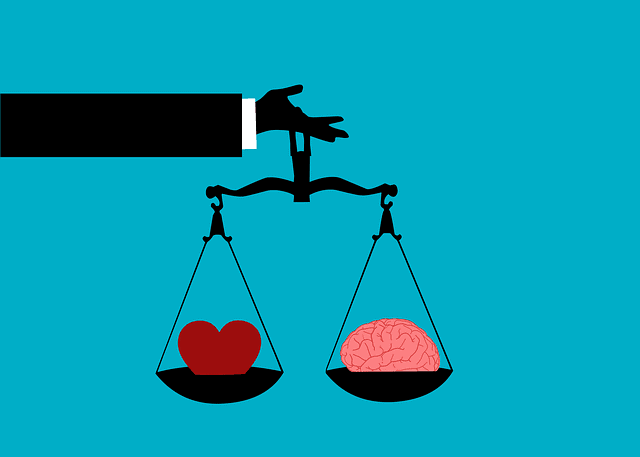Good Manners Are Good for Your Business
By Ann Elliott

What you don’t know you don’t know can be expensive. Emily Post wrote Etiquette in Society, in Business, in Politics and at Home in 1922. Her landmark work articulated guidelines for social behavior. According to her great granddaughter-in-law, Peggy Post, these are often traditional guidelines.
“The underlying code of behavior is based on being thoughtful and considerate that makes our lives function more easily,” says Ms. Post in an interview with Karen Berman on February 8, 1998 in The New York Times. This definition of etiquette is the same; however, the guidelines have evolved in the last 86 years. Some  profound changes such as women in the workplace and the Internet have changed the guidelines. Globalization requires us to be aware of protocol and guidelines in other cultures, too.
How much are you paying by not knowing the rules of social engagement? Have you known people passed over for a promotion, not because they couldn’t do the work but because there is a gap in their manners? They were a liability to the company because they didn’t have the interpersonal skills to interact at the C-level. Table manners, appropriate dress, and communication skills may seem inconsequential but they are the keystones of good human relationships. Your career advancement, business deals and social networks are linked to your awareness and use of proper etiquette.
When you know the guidelines for how people treat each other, you can work more efficiently and improve the quality of life in your workplace. One of the most important skills for business is a proper introduction. Wouldn’t you like to make an introduction confidently and smoothly?
Here are the guidelines to remember in making an introduction: rank, not gender, determines importance in business. Customers, guests and people outside your organization are higher in rank than even your CEO. Say the name of the most important person first.
If you have the opportunity to introduce the president of your company to your new client, how would you do it? “Margaret, I’d like to introduce Bill Marks to you. Bill is our company president. Bill this is Margaret Blanks. She is the account manager for our client, XYZ Company.”
In a few days or next month, no one is going to remember if you made a flawless introduction. What they will remember is if you made an introduction at all. Whose name you said first is of little consequence. If you have the right social skills, you are positioned to make thoughtful, considerate connections that make common sense. You can easily and confidently put other people at ease.
Etiquette is easy to learn and there are many resources. In a stressful situation or when the stakes are high, you can perform at a higher level by knowing the basic guidelines of good manners. Recently my Toastmasters club was ousted from our meeting space. One of our members, Ben, successfully arranged for us to meet in the board room of the South Carolina Chamber of Commerce, a fabulous location on the 17th floor of a downtown office building overlooking the city. We thanked him profusely and he reminded us all we had to do was to use our good manners. Remember what we learned as kids….”Clean up after yourself.”
The following rules of social engagement are guidelines for the United States. They are in no particular order of importance. They may be reminders for some and news for others. If you are already comfortable with these, thank whoever was wise enough to give you this valuable training.
**Give a firm handshake, not a bone crusher or a limp fish. A pet peeve of mine is for someone to offer just their fingers in a handshake.
**Arrive for an appointment on time or a few minutes early, five minutes is plenty early. Never arrive early for a party, however.
**Write a hand written to note to say thank you, express condolences, follow up on a conversation and a myriad of other occasions. President Reagan and Princess Diana were well known for their hand written notes. It’s hard to go wrong with a hand written note on good paper with a postage stamp.
**Chew with your mouth closed and don’t put too much in your mouth at one time.
**Pass food to the right, counter clockwise.
**Show people where to sit when they come into your office. Wait to be invited to sit down when you are visiting someone’s office.
**Identify yourself to the person answering the telephone when you are calling someone. This eliminates the need for them to ask “What is this in reference to?” or “Who’s calling?”
**Speak clearly when leaving a voice mail message. Leave your telephone number at the beginning of the message and again at the end. Leave a succinct message.
**Wait until everyone is served before you start eating. The host or hostess takes the first bite.
**Hold a knife and fork correctly to cut meat or anything else that needs cutting. A fork is not a pitch fork.
**When you leave a function, remember to find the host or hostess to tell them, “Thank you very much. I had a nice time.” (Just like your mama taught you.)
**Only include in an email what you are wiling to have printed in your newspaper. There is no privacy.
**When you are introduced to someone, stand up to shake hands with them.
**When in doubt about what silverware to use, start from the outside and work in. Watch the hostess for cues, too.
**”Thank you” and “Please” are universal. They are always in good taste and never go out of style.
Etiquette is always in fashion. Putting others at ease improves employee morale as well as your customers’ experience with you. Good manners elevate your corporate image and can play a significant role in your bottom line. Good manners are good for your business.
profound changes such as women in the workplace and the Internet have changed the guidelines. Globalization requires us to be aware of protocol and guidelines in other cultures, too.
How much are you paying by not knowing the rules of social engagement? Have you known people passed over for a promotion, not because they couldn’t do the work but because there is a gap in their manners? They were a liability to the company because they didn’t have the interpersonal skills to interact at the C-level. Table manners, appropriate dress, and communication skills may seem inconsequential but they are the keystones of good human relationships. Your career advancement, business deals and social networks are linked to your awareness and use of proper etiquette.
When you know the guidelines for how people treat each other, you can work more efficiently and improve the quality of life in your workplace. One of the most important skills for business is a proper introduction. Wouldn’t you like to make an introduction confidently and smoothly?
Here are the guidelines to remember in making an introduction: rank, not gender, determines importance in business. Customers, guests and people outside your organization are higher in rank than even your CEO. Say the name of the most important person first.
If you have the opportunity to introduce the president of your company to your new client, how would you do it? “Margaret, I’d like to introduce Bill Marks to you. Bill is our company president. Bill this is Margaret Blanks. She is the account manager for our client, XYZ Company.”
In a few days or next month, no one is going to remember if you made a flawless introduction. What they will remember is if you made an introduction at all. Whose name you said first is of little consequence. If you have the right social skills, you are positioned to make thoughtful, considerate connections that make common sense. You can easily and confidently put other people at ease.
Etiquette is easy to learn and there are many resources. In a stressful situation or when the stakes are high, you can perform at a higher level by knowing the basic guidelines of good manners. Recently my Toastmasters club was ousted from our meeting space. One of our members, Ben, successfully arranged for us to meet in the board room of the South Carolina Chamber of Commerce, a fabulous location on the 17th floor of a downtown office building overlooking the city. We thanked him profusely and he reminded us all we had to do was to use our good manners. Remember what we learned as kids….”Clean up after yourself.”
The following rules of social engagement are guidelines for the United States. They are in no particular order of importance. They may be reminders for some and news for others. If you are already comfortable with these, thank whoever was wise enough to give you this valuable training.
**Give a firm handshake, not a bone crusher or a limp fish. A pet peeve of mine is for someone to offer just their fingers in a handshake.
**Arrive for an appointment on time or a few minutes early, five minutes is plenty early. Never arrive early for a party, however.
**Write a hand written to note to say thank you, express condolences, follow up on a conversation and a myriad of other occasions. President Reagan and Princess Diana were well known for their hand written notes. It’s hard to go wrong with a hand written note on good paper with a postage stamp.
**Chew with your mouth closed and don’t put too much in your mouth at one time.
**Pass food to the right, counter clockwise.
**Show people where to sit when they come into your office. Wait to be invited to sit down when you are visiting someone’s office.
**Identify yourself to the person answering the telephone when you are calling someone. This eliminates the need for them to ask “What is this in reference to?” or “Who’s calling?”
**Speak clearly when leaving a voice mail message. Leave your telephone number at the beginning of the message and again at the end. Leave a succinct message.
**Wait until everyone is served before you start eating. The host or hostess takes the first bite.
**Hold a knife and fork correctly to cut meat or anything else that needs cutting. A fork is not a pitch fork.
**When you leave a function, remember to find the host or hostess to tell them, “Thank you very much. I had a nice time.” (Just like your mama taught you.)
**Only include in an email what you are wiling to have printed in your newspaper. There is no privacy.
**When you are introduced to someone, stand up to shake hands with them.
**When in doubt about what silverware to use, start from the outside and work in. Watch the hostess for cues, too.
**”Thank you” and “Please” are universal. They are always in good taste and never go out of style.
Etiquette is always in fashion. Putting others at ease improves employee morale as well as your customers’ experience with you. Good manners elevate your corporate image and can play a significant role in your bottom line. Good manners are good for your business.
 profound changes such as women in the workplace and the Internet have changed the guidelines. Globalization requires us to be aware of protocol and guidelines in other cultures, too.
How much are you paying by not knowing the rules of social engagement? Have you known people passed over for a promotion, not because they couldn’t do the work but because there is a gap in their manners? They were a liability to the company because they didn’t have the interpersonal skills to interact at the C-level. Table manners, appropriate dress, and communication skills may seem inconsequential but they are the keystones of good human relationships. Your career advancement, business deals and social networks are linked to your awareness and use of proper etiquette.
When you know the guidelines for how people treat each other, you can work more efficiently and improve the quality of life in your workplace. One of the most important skills for business is a proper introduction. Wouldn’t you like to make an introduction confidently and smoothly?
Here are the guidelines to remember in making an introduction: rank, not gender, determines importance in business. Customers, guests and people outside your organization are higher in rank than even your CEO. Say the name of the most important person first.
If you have the opportunity to introduce the president of your company to your new client, how would you do it? “Margaret, I’d like to introduce Bill Marks to you. Bill is our company president. Bill this is Margaret Blanks. She is the account manager for our client, XYZ Company.”
In a few days or next month, no one is going to remember if you made a flawless introduction. What they will remember is if you made an introduction at all. Whose name you said first is of little consequence. If you have the right social skills, you are positioned to make thoughtful, considerate connections that make common sense. You can easily and confidently put other people at ease.
Etiquette is easy to learn and there are many resources. In a stressful situation or when the stakes are high, you can perform at a higher level by knowing the basic guidelines of good manners. Recently my Toastmasters club was ousted from our meeting space. One of our members, Ben, successfully arranged for us to meet in the board room of the South Carolina Chamber of Commerce, a fabulous location on the 17th floor of a downtown office building overlooking the city. We thanked him profusely and he reminded us all we had to do was to use our good manners. Remember what we learned as kids….”Clean up after yourself.”
The following rules of social engagement are guidelines for the United States. They are in no particular order of importance. They may be reminders for some and news for others. If you are already comfortable with these, thank whoever was wise enough to give you this valuable training.
**Give a firm handshake, not a bone crusher or a limp fish. A pet peeve of mine is for someone to offer just their fingers in a handshake.
**Arrive for an appointment on time or a few minutes early, five minutes is plenty early. Never arrive early for a party, however.
**Write a hand written to note to say thank you, express condolences, follow up on a conversation and a myriad of other occasions. President Reagan and Princess Diana were well known for their hand written notes. It’s hard to go wrong with a hand written note on good paper with a postage stamp.
**Chew with your mouth closed and don’t put too much in your mouth at one time.
**Pass food to the right, counter clockwise.
**Show people where to sit when they come into your office. Wait to be invited to sit down when you are visiting someone’s office.
**Identify yourself to the person answering the telephone when you are calling someone. This eliminates the need for them to ask “What is this in reference to?” or “Who’s calling?”
**Speak clearly when leaving a voice mail message. Leave your telephone number at the beginning of the message and again at the end. Leave a succinct message.
**Wait until everyone is served before you start eating. The host or hostess takes the first bite.
**Hold a knife and fork correctly to cut meat or anything else that needs cutting. A fork is not a pitch fork.
**When you leave a function, remember to find the host or hostess to tell them, “Thank you very much. I had a nice time.” (Just like your mama taught you.)
**Only include in an email what you are wiling to have printed in your newspaper. There is no privacy.
**When you are introduced to someone, stand up to shake hands with them.
**When in doubt about what silverware to use, start from the outside and work in. Watch the hostess for cues, too.
**”Thank you” and “Please” are universal. They are always in good taste and never go out of style.
Etiquette is always in fashion. Putting others at ease improves employee morale as well as your customers’ experience with you. Good manners elevate your corporate image and can play a significant role in your bottom line. Good manners are good for your business.
profound changes such as women in the workplace and the Internet have changed the guidelines. Globalization requires us to be aware of protocol and guidelines in other cultures, too.
How much are you paying by not knowing the rules of social engagement? Have you known people passed over for a promotion, not because they couldn’t do the work but because there is a gap in their manners? They were a liability to the company because they didn’t have the interpersonal skills to interact at the C-level. Table manners, appropriate dress, and communication skills may seem inconsequential but they are the keystones of good human relationships. Your career advancement, business deals and social networks are linked to your awareness and use of proper etiquette.
When you know the guidelines for how people treat each other, you can work more efficiently and improve the quality of life in your workplace. One of the most important skills for business is a proper introduction. Wouldn’t you like to make an introduction confidently and smoothly?
Here are the guidelines to remember in making an introduction: rank, not gender, determines importance in business. Customers, guests and people outside your organization are higher in rank than even your CEO. Say the name of the most important person first.
If you have the opportunity to introduce the president of your company to your new client, how would you do it? “Margaret, I’d like to introduce Bill Marks to you. Bill is our company president. Bill this is Margaret Blanks. She is the account manager for our client, XYZ Company.”
In a few days or next month, no one is going to remember if you made a flawless introduction. What they will remember is if you made an introduction at all. Whose name you said first is of little consequence. If you have the right social skills, you are positioned to make thoughtful, considerate connections that make common sense. You can easily and confidently put other people at ease.
Etiquette is easy to learn and there are many resources. In a stressful situation or when the stakes are high, you can perform at a higher level by knowing the basic guidelines of good manners. Recently my Toastmasters club was ousted from our meeting space. One of our members, Ben, successfully arranged for us to meet in the board room of the South Carolina Chamber of Commerce, a fabulous location on the 17th floor of a downtown office building overlooking the city. We thanked him profusely and he reminded us all we had to do was to use our good manners. Remember what we learned as kids….”Clean up after yourself.”
The following rules of social engagement are guidelines for the United States. They are in no particular order of importance. They may be reminders for some and news for others. If you are already comfortable with these, thank whoever was wise enough to give you this valuable training.
**Give a firm handshake, not a bone crusher or a limp fish. A pet peeve of mine is for someone to offer just their fingers in a handshake.
**Arrive for an appointment on time or a few minutes early, five minutes is plenty early. Never arrive early for a party, however.
**Write a hand written to note to say thank you, express condolences, follow up on a conversation and a myriad of other occasions. President Reagan and Princess Diana were well known for their hand written notes. It’s hard to go wrong with a hand written note on good paper with a postage stamp.
**Chew with your mouth closed and don’t put too much in your mouth at one time.
**Pass food to the right, counter clockwise.
**Show people where to sit when they come into your office. Wait to be invited to sit down when you are visiting someone’s office.
**Identify yourself to the person answering the telephone when you are calling someone. This eliminates the need for them to ask “What is this in reference to?” or “Who’s calling?”
**Speak clearly when leaving a voice mail message. Leave your telephone number at the beginning of the message and again at the end. Leave a succinct message.
**Wait until everyone is served before you start eating. The host or hostess takes the first bite.
**Hold a knife and fork correctly to cut meat or anything else that needs cutting. A fork is not a pitch fork.
**When you leave a function, remember to find the host or hostess to tell them, “Thank you very much. I had a nice time.” (Just like your mama taught you.)
**Only include in an email what you are wiling to have printed in your newspaper. There is no privacy.
**When you are introduced to someone, stand up to shake hands with them.
**When in doubt about what silverware to use, start from the outside and work in. Watch the hostess for cues, too.
**”Thank you” and “Please” are universal. They are always in good taste and never go out of style.
Etiquette is always in fashion. Putting others at ease improves employee morale as well as your customers’ experience with you. Good manners elevate your corporate image and can play a significant role in your bottom line. Good manners are good for your business.Share this resource




